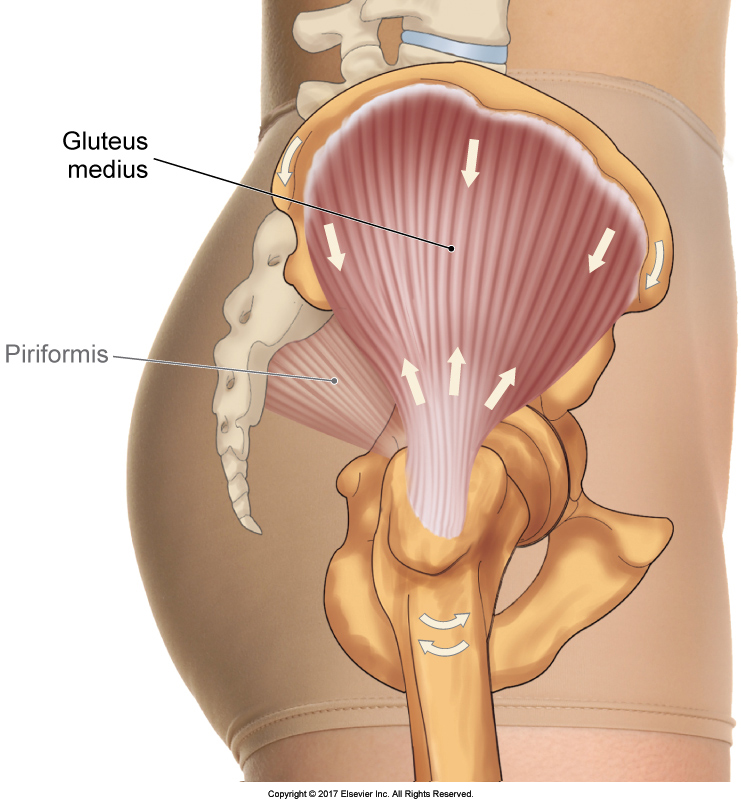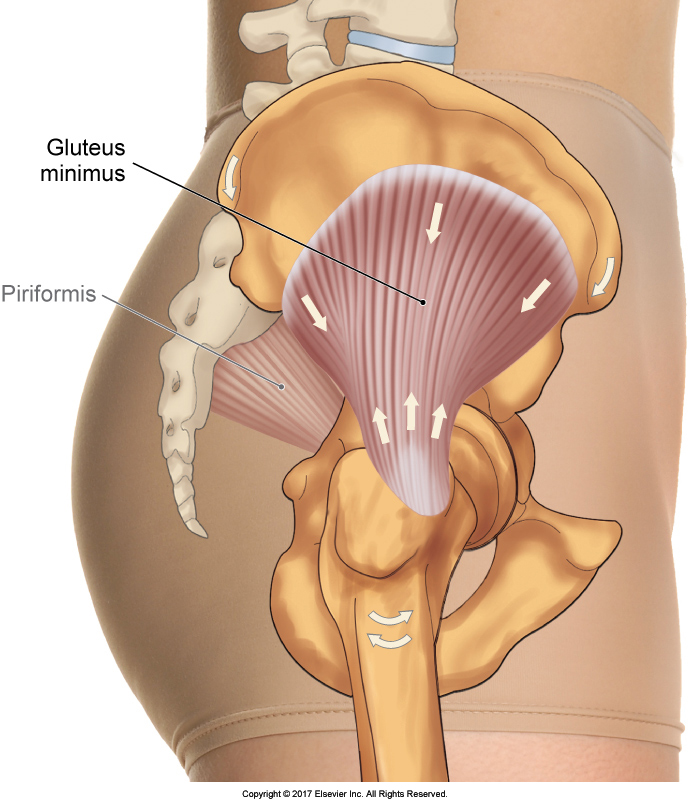Gluteal Tendinopathy

Gluteus medius – Permission Joseph E. Muscolino.
Gluteal tendinopathy is a source of lateral hip pain, yet common clinical diagnostic/assessment tests for this condition have limited validity. Patients with gluteal tendinopathy are often misdiagnosed, resulting in inappropriate management, including surgery.
Study
A study by physiotherapists from University of Queensland in Australia investigated the diagnostic validity of clinical tests for gluteal tendinopathy, and compared them to MRI scan as the reference standard. The study was published in British Journal of Sports Medicine.
Sixty-five participants (69% of whom are female) with lateral hip pain were examined to evaluate the validity of clinical tests to detect MRI-determined gluteal tendinopathy (an increase in intratendinous signal intensity on T2-weighted images, examined by a radiologist).
Four clinical diagnostic tests were employed:
- Single leg stance.
- Greater trochanter palpation.
- Hip Flexion/ADduction/External Rotation (FADER), without and with resisted isometric hip internal rotation.
- Passive hip adduction in side lying with and without resisted abduction (ADD).
Results

Gluteus Minimus – Permission Joseph E. Muscolino.
Single Leg Stance: Pain reported within 30 seconds of standing on the affected limb conclusively correlated with gluteal tendinopathy presence on MRI.
Greater Trochanter Palpation: Palpation of the greater trochanter had the highest sensitivity (80%) but poorest specificity (47%). High sensitivity means it picks up most people with MRI gluteal tendinopathy, but low specificity means that many false positives occurred, meaning that people who do not have MRI gluteal tendinopathy have pain on palpation.
FADER and ADD tests: The FADER and ADD tests had high specificity (very few false positives) but low sensitivity (inability to find people with gluteal tendinopathy). However, when the resistance was applied they became better diagnostic tests.
Conclusion
The results of this study indicate that a patient who reports lateral hip pain within 30 seconds of Single Leg Stance is very likely to have gluteal tendinopathy. Patients with lateral hip pain on Single Leg Stance and who are not palpably tender over the greater trochanter are unlikely to have gluteal tendinopathy.
This blog post article was created in collaboration with www.terra.rosa.com.au.
(Click here for the blog post article What is the “true” function of the gluteus medius?)

